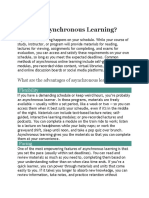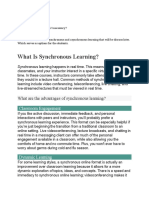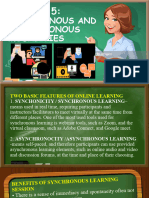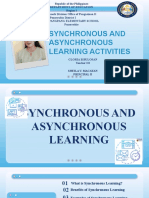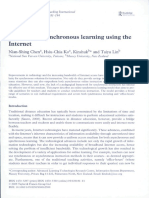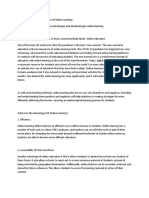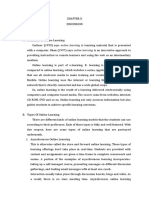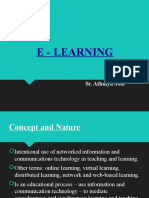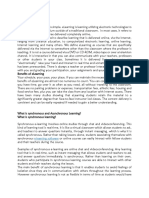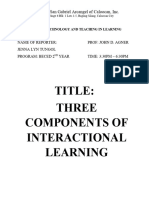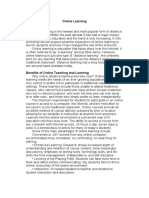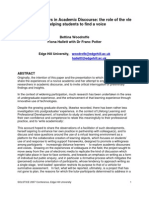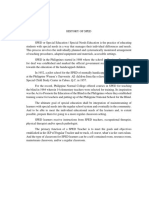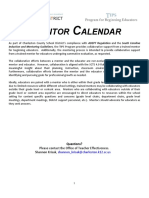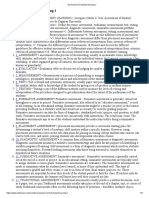0% found this document useful (0 votes)
12 views8 pagesSynchronious and Asynchronius Learning
The document discusses two types of online learning: synchronous and asynchronous. Synchronous learning involves real-time interaction between instructors and students, offering benefits like immediate engagement but facing challenges such as scheduling and technical issues. Asynchronous learning allows students to access materials at their own pace, promoting reflection and flexibility, but may lead to limited instructor contact and distractions.
Uploaded by
Gunel AbasovaCopyright
© © All Rights Reserved
We take content rights seriously. If you suspect this is your content, claim it here.
Available Formats
Download as PPTX, PDF, TXT or read online on Scribd
0% found this document useful (0 votes)
12 views8 pagesSynchronious and Asynchronius Learning
The document discusses two types of online learning: synchronous and asynchronous. Synchronous learning involves real-time interaction between instructors and students, offering benefits like immediate engagement but facing challenges such as scheduling and technical issues. Asynchronous learning allows students to access materials at their own pace, promoting reflection and flexibility, but may lead to limited instructor contact and distractions.
Uploaded by
Gunel AbasovaCopyright
© © All Rights Reserved
We take content rights seriously. If you suspect this is your content, claim it here.
Available Formats
Download as PPTX, PDF, TXT or read online on Scribd
/ 8


